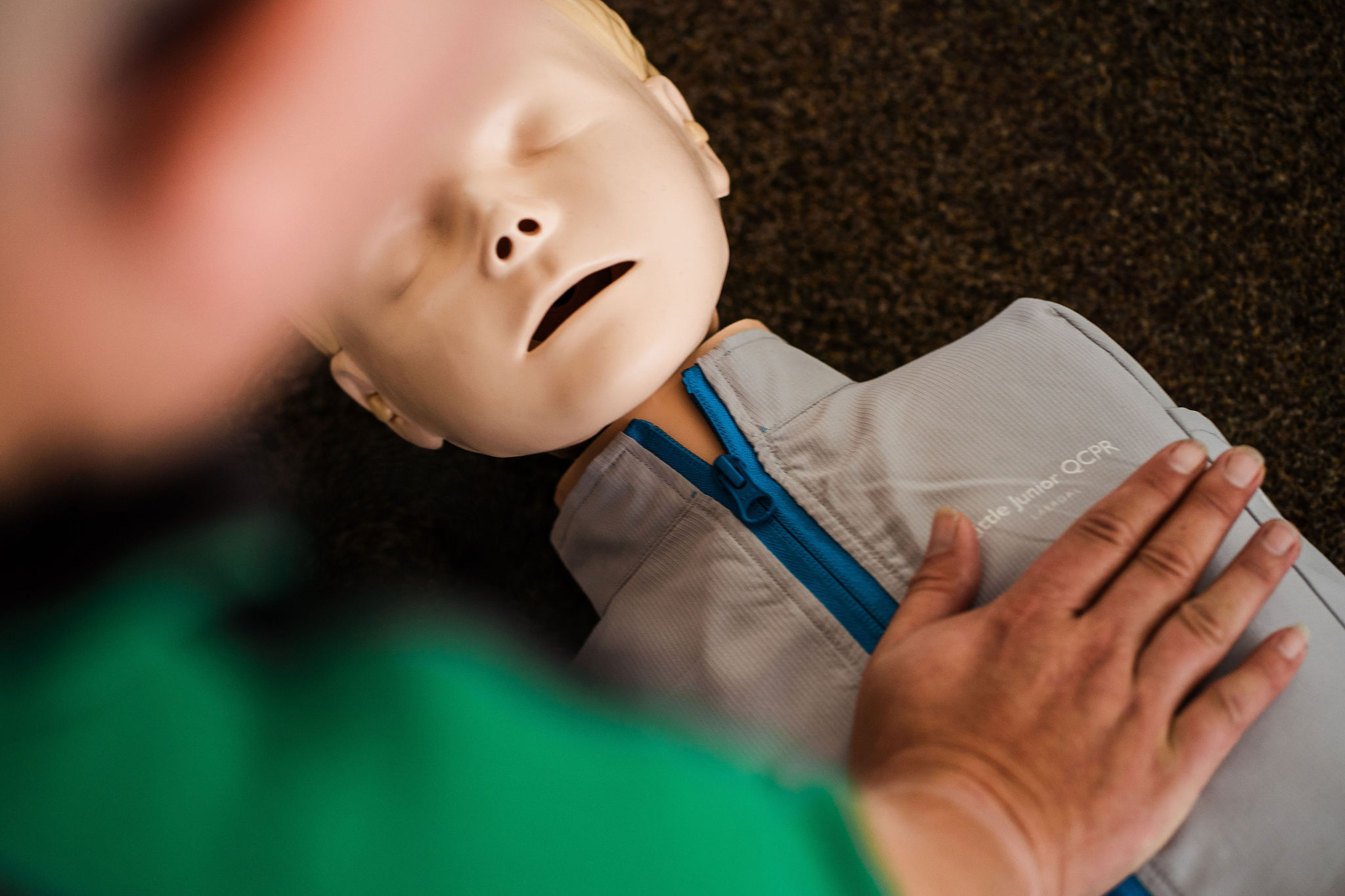Child CPR

For the purposes of first aid and resuscitation a child is described as a person who is aged from 1 year to 18 years of age.
We also have advice on how to perform CPR (cardiopulmonary resuscitation) on an infant/baby (up to 1 year old) and an adult (18+).
If you find an child collapsed or unresponsive, you should:
- Assess any dangers to yourself and the casualty. Move items if necessary to make the area safe.
- If safe to approach the casualty, assess the casualty’s response levels by gently shaking the shoulders and shouting ‘’are you all right?’’
- If there is no response e.g. the casualty does not move, talk, or open their eyes - shout for help.
- To open the airway, place one hand on the casualty’s forehead and tilt the head back gently.
- Place your index and middle finger of your other hand onto the casualty’s chin and lift. This will lift the casualty’s tongue from the back of their airway.
With the head tilt and chin lift maintained, assess the casualty for breathing:
-
Place your ear over the casualty’s mouth and nose and listen for breathing and feeling for breath on your cheek.
-
At the same time look at the casualty’s chest and stomach to see if it is rising and falling. Take no more than 10 seconds to assess breathing.
If the casualty is not breathing normally or you are unsure start CPR:
- If there is a bystander ask them to call 999/112. If you are alone and have a mobile phone, call 999/112 and put your mobile on loud speaker so that you can talk to the operator while performing chest compressions.
- If you are alone and you do not have access to a mobile phone start CPR (as described below) for one minute. If the casualty does not show signs of life after one minute leave the casualty to find a phone and call the emergency services.
- The ambulance call handler will tell you where the nearest automated external defibrillator (AED) is. If someone is with you, ask them to fetch it and bring it back.
A non-breathing child will need 5 initial rescue breaths (if you are willing and able) followed by 30 chest compressions, followed by 2 rescue breaths.
To give rescue breaths:
- Open the airway as described above.
- Pinch the casualty’s nostrils closed with your finger and thumb, gently pull down on the casualty’s chin to open their mouth, seal your mouth over the casualty’s mouth and blow steadily for no more than 1 second or until you see the chest rise.
- Give five initial rescue breaths.
To perform chest compressions:
- Kneel by the casualty and put the heel of one hand in the centre of the child’s chest. One hand should be sufficient to achieve a depth of 5cms or a third of the child’s chest depth.
- Give 30 chest compressions at a rate of 100-120 beats per minute). The beat of the song 'Staying Alive' can help you keep between this range.
- If you are unable to achieve the 5cm depth with one hand. Use two hands by placing your other hand on top of the first. Interlock your fingers making sure they don't touch the ribs.
- Keep your arm/s straight and lean over the casualty. Press down hard, to a depth of about 5cms before releasing the pressure, allowing the chest to fully recoil.
Following 30 chest compressions give two rescue breaths if you are willing and able. If you are unwilling or unable to give rescue breaths, perform chest compression only CPR as this is better than nothing. Push down hard and then release twice per second, and don’t stop. Ideally rescue breaths with chest compressions is most effective.
Continue giving 30 chest compressions followed by 2 rescue breaths and continue this until:
- Further qualified assistance arrives and takes over
- The casualty starts to show signs of life (breathing, talking)
- You become tired and need to swap with another bystander
- A defibrillator is ready to be used.
If you work with children or are around children/teenagers under the age of 18, then you may be interested in one of our training courses. You will be awarded with certificate upon completion and the qualifications are valid for three years:
